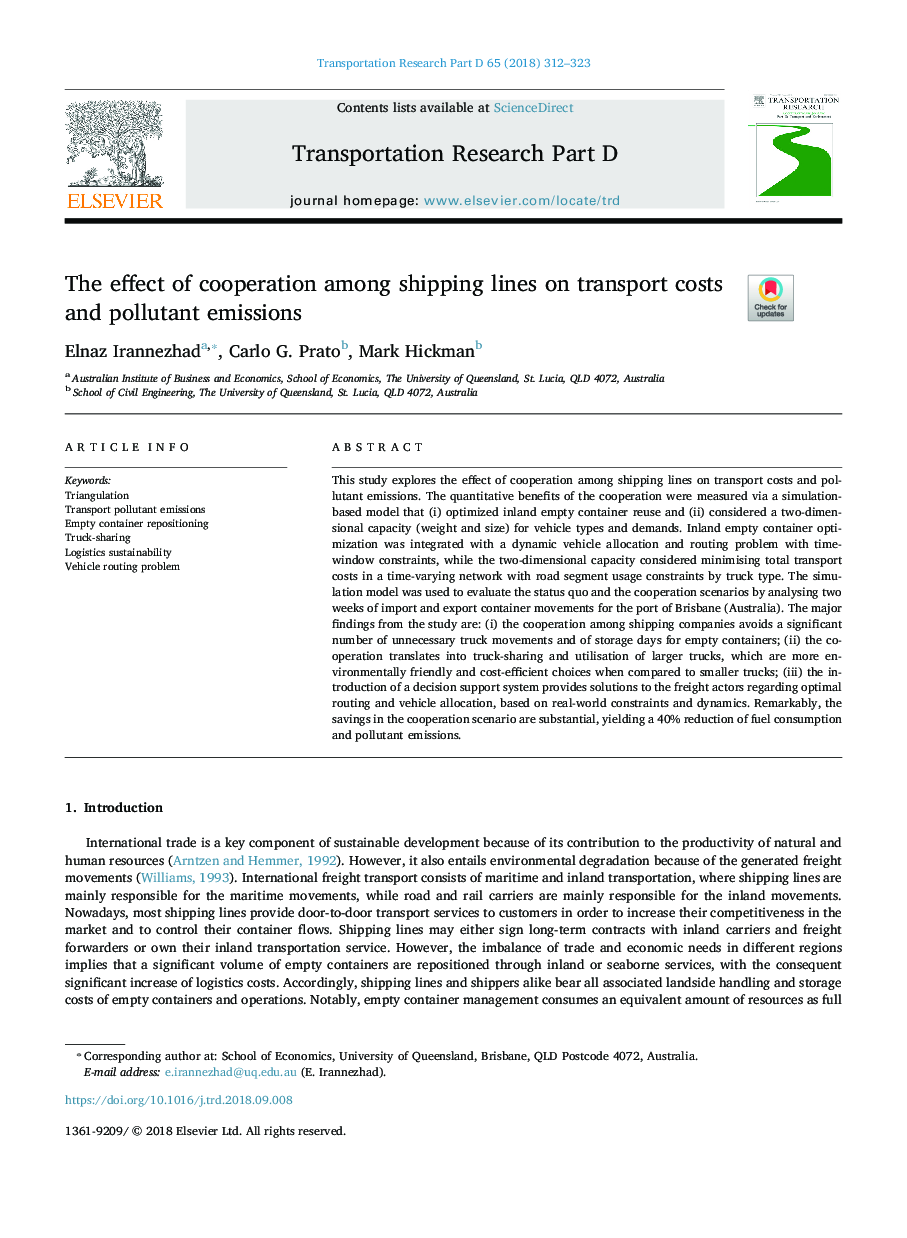| Article ID | Journal | Published Year | Pages | File Type |
|---|---|---|---|---|
| 9953270 | Transportation Research Part D: Transport and Environment | 2018 | 12 Pages |
Abstract
This study explores the effect of cooperation among shipping lines on transport costs and pollutant emissions. The quantitative benefits of the cooperation were measured via a simulation-based model that (i) optimized inland empty container reuse and (ii) considered a two-dimensional capacity (weight and size) for vehicle types and demands. Inland empty container optimization was integrated with a dynamic vehicle allocation and routing problem with time-window constraints, while the two-dimensional capacity considered minimising total transport costs in a time-varying network with road segment usage constraints by truck type. The simulation model was used to evaluate the status quo and the cooperation scenarios by analysing two weeks of import and export container movements for the port of Brisbane (Australia). The major findings from the study are: (i) the cooperation among shipping companies avoids a significant number of unnecessary truck movements and of storage days for empty containers; (ii) the cooperation translates into truck-sharing and utilisation of larger trucks, which are more environmentally friendly and cost-efficient choices when compared to smaller trucks; (iii) the introduction of a decision support system provides solutions to the freight actors regarding optimal routing and vehicle allocation, based on real-world constraints and dynamics. Remarkably, the savings in the cooperation scenario are substantial, yielding a 40% reduction of fuel consumption and pollutant emissions.
Related Topics
Life Sciences
Environmental Science
Environmental Science (General)
Authors
Elnaz Irannezhad, Carlo G. Prato, Mark Hickman,
